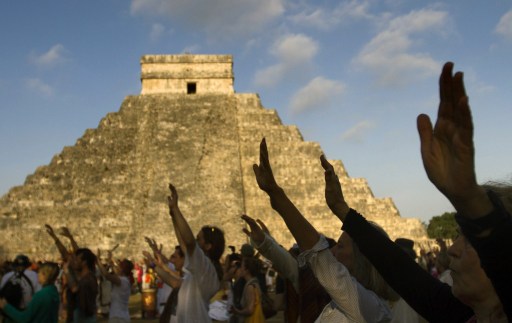
Visitors raise their hands during celebrations for the end of the Mayan cycle known as Bak’tun 13 and the start of the Maya new age, at the Chichen Itza archaeological park, in Yucatan state, Mexico on December 21, 2012, . AFP PHOTO
MEXICO CITY, Mexico — Mexican archeologists have discovered a canal system under the pyramid containing the tomb of a Mayan ruler, suggesting the water tunnel could represent a symbolic path to the underworld.
The hydraulic system was found under the Temple of the Inscriptions, which houses the seventh-century tomb of Pakal “The Great” in Palenque, the ancient Maya city in southern Chiapas state, the National Anthropology and History Institute announced Monday.
“The presence of these canals is very important and very significant,” said Arnoldo Gonzalez, the directory of archeology in Palenque.
An inscription in the tomb says that to be accepted in the underworld, the dead must be submerged in the water of a god called Chaac.
The underground network of canals has different levels and goes in different directions, and it was built “well before” the pyramid, according to the national anthropology institute.
Water was still running through the main canal when it was discovered, suggesting that its source is a natural spring.
But archeologists have been unable to determine the length of the tunnel or where it begins.
Gonzalez did not rule out the possibility that the canals were part of a drainage or water supply system.
“We must also consider that the ancient Palenque residents designed the hydraulic system to metaphorically reproduce the path that led K’nich Janaab’ Pakal to the waters of the underworld,” Gonzalez said.
The canal system was discovered with sonars. Archeologists initially thought it could have been a fault line but cameras mounted on small vehicles confirmed the existence of the system, which was built with large stones.


